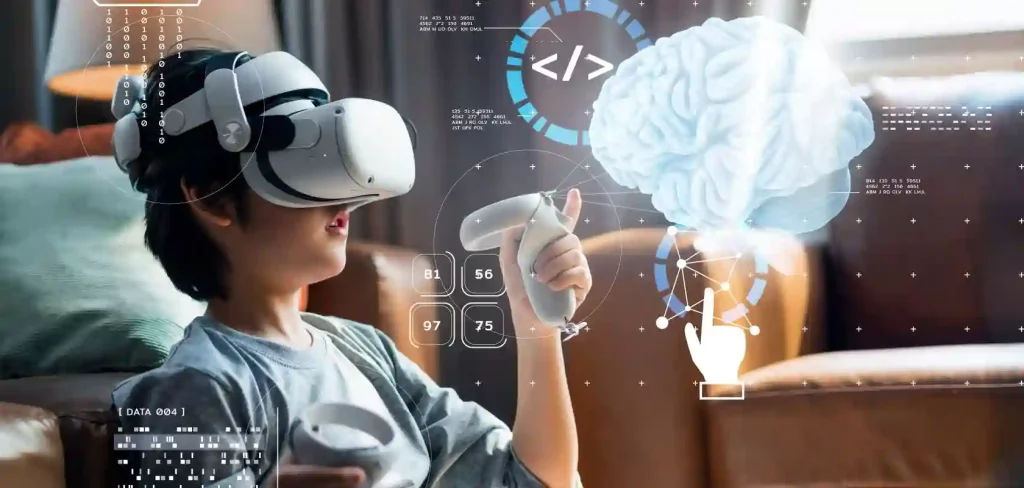Virtual Reality is a new and innovative technology that has taken businesses by storm. It is transforming how companies operate, train employees and engage customers.
With VR, customers can experience a product before buying it. This can improve customer engagement for brick-and-mortar stores and increase online sales for retailers.
For example, engineers can experiment with a design in virtual reality without having to build a full-scale prototype. This helps reduce costs and speed up the design process.
Increased Sales
Virtual reality is a great way to demonstrate the benefits of your products and services. It can help you build product awareness and increase sales by connecting with customers in an immersive experience.
VR helps companies implement the “try before you buy” strategy that is so popular in brick-and-mortar stores. For example, Lowe’s Home Improvement allows its customers to design their dream kitchen or bathroom and then use VR to walk around the space and view it from all angles. This is a huge benefit for customers, who can make better decisions when they have all the information at hand.
Using VR to train employees is another effective business strategy. It saves time and money for both the company and its trainees. It also reduces the risk of workplace injuries, which is especially important when training for dangerous tasks. For example, law enforcement officers can be trained in a virtual reality hire for events environment to simulate situations ranging from routine traffic stops to being shot at. The technology has even been used by mining companies to train their employees for safety in hazardous environments.
Improved Marketing Campaigns
VR is a next-level marketing tool that allows businesses to create immersive and engaging experiences for their audiences. These experiences can help build trust and credibility with customers, which in turn leads to higher sales.
One example of a business using VR to improve its marketing campaigns is Lowe’s Home Improvement, which launched a virtual reality experience that allows homeowners to design their own kitchen or bathroom and then walk through the finished space. This allows customers to get a sense of what the product will be like before they make their purchase, which helps them feel confident in their decision.
VR is also being used in staff training, allowing employees to experience real-world scenarios without the need for travel or expensive equipment. This can reduce risk, save time and money, and improve productivity.
Better Customer Service
Virtual reality technology helps businesses to provide better customer service by enabling customers to experience products, services and locations virtually. Companies can also use VR to train employees to improve their skills and knowledge in a risk-free environment.
For example, a car dealer can use VR to enable potential customers to test drive and configure the new car without needing access to a physical model. This allows them to lower their inventory and thereby reduce costs. In addition, it can be used to train technicians how to service or repair a specific product.
VR software enables engineers to view and interact with digital twins of products in a virtual space, improving the design process and saving time. It also allows for the visualization of data points as objects in a 3D space, allowing users to see patterns and trends that would otherwise be obscured by traditional charts and graphs.
Virtual reality is transforming business in many ways, from increasing sales to training employees. If you are interested in learning more about how VR could benefit your business, talk to a custom software development company with experience in this area.
Reduced Travel Costs
Using VR, meetings and events can be held without the need to travel. By eliminating business trips and commutes, employees save time and money, while companies reduce their carbon footprint. This also makes for a better work-life balance.
For example, Hewlett Packard Enterprise recently held a senior legal meeting in virtual reality. They calculated that if each participant had traveled to Houston, the CO2 generated by the flights would have been 5,658 kg (12,473 lbs.).
VR can be used to simulate hazardous situations such as industrial accidents or simulated training, which eliminates the need for employees to travel and significantly cuts down on expenses. This can also increase safety and improve efficiency.
This is not the only way VR can make an impact in business. The use of VR is expanding rapidly across industries and businesses. It is the perfect tool to connect people around the world in a fun and engaging way. It is also ideal for reducing costs, increasing customer service, and providing a more innovative experience. Contact a VR development company like Program-Ace to see how they can help your business achieve its goals.
Reduced Risk
Virtual Reality is often seen as a gimmick but it offers an intrinsic value to businesses that have safety critical work like firemen, medics or other medical professionals and even roofers. For these types of jobs, any mistake could be fatal. Training in VR reduces this risk by simulating scenarios and allowing employees to practice and make mistakes without the associated risks.
This same type of risk reduction applies to a wide range of business sectors including construction, travel, real estate and customer service. For example, BP has used VR to train their workforce in the start-up and shutdown of their oil refinery. This allows workers to become familiar with every aspect of the equipment in a safe environment before they set foot on the real site.
Retailers are able to use VR to create immersive experiences that allow customers to test out products before they buy. This enhances customer experience and builds brand trust and engagement. In addition, it also reduces returns and improves customer satisfaction. This can reduce operating costs, warehousing and distribution expenses as well as insurance premiums.
